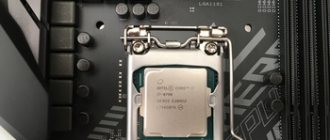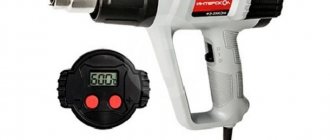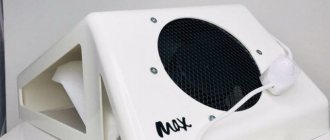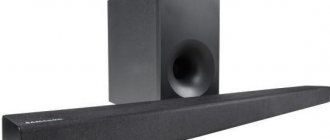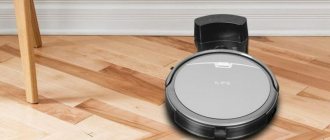Before Ryzen, you could only find AMD processes in computer stores on one platform - AM3. Of course, a little later its improved version appeared - AM3+, but in general they were both extremely popular, because they provided all the necessary options for lovers of powerful and fast PCs at a low cost.
Today, not everyone can afford the same Ryzen 1, 2 and 3 generations, so the issue with processors on the AM3 socket remains open. They can still be found, which indicates the relevance of the platform.
Now the processors of this platform are inexpensive, which means you have the opportunity to build an inexpensive PC that will be able to handle “heavy” games and software for the coming years. We will dedicate this article to them.
Which is the best processor for socket AM3
Now let's move on to which processors that support this socket will be the best choice for you.
Overview of AM3 and AM3+ sockets and rules for choosing processors
Socket AM3 is a platform for AMD processes, developed as a replacement for sockets AM2 and AM2+.
Unlike previous sockets, AM3 had hardware and software support for DDR3 RAM. In addition, this platform had a faster bus that supported HyperTransport technology. The fact that AM3 is largely similar to the previous platform can be understood by quickly looking at the changes.
- Conversion of chips to LGA packaging.
- Preservation of geometric dimensions.
- The number of CPU pins remains the same.
Since AMD was driven by the idea of compatibility and continuity, finding differences between the old (AM2) and new (AM3) sockets can be very difficult and can only be seen if you look very carefully.
Continuity and compatibility are what determined the success of the AM3 socket
Later, the AM3+ socket appears, which differs slightly from its “parent”. This is evident in the support for backward compatibility between AM3 and AM3+. However, to use an AM3 processor with an AM3+ socket, you must first update the BIOS to the latest version.
Important! Processors for AM2 and AM2+ cannot be installed on a board with AM3 support due to technical limitations. But you can do the opposite - by installing a processor for AM3 on a board that supports AM2 and AM2+, you can safely use it.
There are several visual cues that can help you identify your socket.
- Colors . AM3 is always painted white, but AM3+ is black.
- Labeling . AM3 has always had the same marking, and its improved version has undergone minor changes in marking - AM3+ is designated as AM3b.
Socket AM3 and its improved version have slight differences.
If hardware is not your thing, you can use software methods to determine the socket. For example, CPU-Z.
We’ll tell you now what you need to do with this program.
- Launch CPU-Z.
- Go to the Mainboard section
- Find the line with the manufacturer's name and model name.
After this, you can find the website of the motherboard manufacturer on the Internet, indicate your model and there you will see what platform for the processor is, and also find out what BIOS version you need for stable operation of your processor with the motherboard.
You can programmatically detect the socket version
How L3 Cache Size Can Affect CPU Performance
If we talk about the hardware component, what is noteworthy about AM3 is that the size of the third level cache has been reduced. And this raises the question: will everything become slower? The answer to this question lies in comparison.
To make it clearer, you can compare two processors of the same line. Let's take, for example, quad-core models, namely the Phenom II X4 810 and its improved version, the Phenom II X4 920.
Both models have a lot in common: the same technical process, the same clock speed, the same number of cores. The difference between them is only in the amount of cache memory. Speaking in specific numbers – 4 and 6 MB.
Cache memory is one of the important components of the processor, which means it needs to be given attention when choosing a processor.
The difference of 2 MB is a very insignificant figure, and therefore we cannot talk about a reduction in performance. A 2-5% drop is so insignificant that it can be ignored.
From this we can conclude that the 810 model is cheaper and the cache volume does not interfere with being on the same level with it. Another thing that gets in the way is the low clock frequency of the 810 model.
Energy consumption
The development of Phenom II processors took a long time. In an attempt to improve its power consumption, AMD has made several changes to outperform Intel models in this regard.
- First, a change in the CPU design made it possible to use not two, but four p-states, which helped reduce the core clock frequency to 800 MHz when idle. As a result, energy consumption was reduced, and significantly.
- In addition to the design, the energy saving mechanism . Bringing all cores to the same clock frequency made it possible to maintain high performance while increasing the number of p-states.
Let's take as a before/after comparison a processor like the Phenom X4 9950 Black Edition. It had a high heat output (140 W), which is why it could not be installed everywhere.
As soon as AMD switched to the 45 nm process technology, all CPUs decreased power consumption, the thermal package became equal to 125 W, and for weaker processors it was generally 95 W.
Energy consumption is an extremely important issue, because you need to calculate how much each PC component consumes, especially the processor
Everything you need to know about overclocking on the AM3 platform
Phenom II and its release once again sharpened attention to the topic of overclocking processors from AMD. The 45-nm process technology made it possible to increase overclocking potential, because when using an air-cooling system (ACS), four- and six-core processors supporting the AM3 socket are capable of reaching frequencies on average of 3.7-3.8 GHz. Some processors that came out later were capable of reaching 4 GHz.
Let's take the Phenom II X4 810 processor as an example. Using a motherboard on the AM3 platform, we overclock the processor and discover the following.
- Auto-overclocking (the so-called Turbo Core), if present in processor support, allows you to achieve the desired results in one click.
- If there is no such function, you should look for an unlocked multiplier . For processors with AM3 support, it is usually unlocked in the Black Edition.
- Overclocking involves using a different air cooling system . A stock cooler is only suitable for normal CPU use (maintaining the base clock speed.
As we said a little earlier, the average speed after overclocking is 3.7-3.8 GHz. This can be achieved by increasing the CPU supply voltage. Typically the shift is slightly more than 1 V.
Important! Manual overclocking, if you have never done it before, is better not to do it. All changes occur at your own risk.
In the presence of a non-free multiplier, as in the case of the Phenom II X4 810, overclocking is carried out by increasing the clock frequency of the generator. Its increase to 280 MHz, in general, is easily absorbed by the motherboard, which means there are no problems with increasing the processor clock speed to 3.64 GHz.
The following follows from this: overclocking processors in sockets AM2 and AM3 is absolutely the same, which means it can be done as we have just described.
Getting an overclock of 40% allows you to achieve an advantage on the part of the 810th processor compared to its counterpart in the form of the Intel Core 2 Quad Q8200, which can only be overclocked to 3.4 GHz.
Conclusion: the overclocked 810 will attract not only overclockers who want to overclock the processor to the maximum, but also ordinary people who crave a powerful PC.
Briefly about Socket AM3 and AM3+
Before moving on to the list of the most powerful processors for socket AM3, let's say a few words about this platform and its features.
Socket AM3 (or Socket 941) appeared in 2009 and replaced its already outdated predecessor AM2+. The main innovation that was introduced in AM3 was support for DDR3 RAM. AM3 processors also received an accelerated version of the HyperTransport bus.
Despite these changes, Socket AM3 received partial compatibility with its predecessor sockets. Thus, processors designed for AM3 can be used on boards with socket AM2 and AM2+. This is possible due to the fact that processors for AM3 contain both DDR2 and DDR3 controllers. However, older processors for sockets AM2 and AM2+ cannot be used on motherboards with socket AM3, since they are equipped only with a DDR2 controller.
In 2011, AMD introduced an updated version of this socket called Socket AM3+. The new version of the socket was intended to run Zambezi (Bulldozer) processors and retained backward compatibility with AM3. Thanks to this, processors that were released for the AM3 socket can be installed on boards with AM3+. Also, in some cases it is possible to use new processors for AM3+ on old boards with AM3. At the same time, processors for AM3+ are not completely compatible with the old AM2 and AM2+, since they are no longer equipped with DDR2 controllers.
Despite the similar design, AM3 and AM3+ sockets are easy to distinguish by color. The AM3 socket is always white, and the AM3+ is always black. Also, these sockets can be distinguished by markings, since the AM3+ connector is always marked as AM3b.
conclusions
The transition to the AM3 platform was not easy. Not everyone could take advantage of the benefits it provides, especially those who bought the first Phenom II models a long time ago - they do not support DDR3 at all. There were other pressing problems - for example, the refusal to work in dual-channel RAM mode.
Despite this, this platform showed its best side . Everything went smoothly and clearly at a low cost. Cheap motherboards increased the popularity of this socket, and therefore many interesting processor models appeared that support the AM3 socket.
In the future, AMD, of course, released other sockets, fixed problems with RAM, unlocked multipliers on its processors, and most importantly, developed Ryzen, which is now available in three generations. But without AM3 it wouldn't exist now.
In this article, we have compiled the best CPU options that support socket AM3. Now they are produced less frequently, so it is better to look for them on various online sites such as Ebay or Amazon, as well as in computer stores.
The best processors on Socket AM3 and AM3+
Below is a list of the best processors for sockets AM3 and AM3+. All processors in the list are sorted by performance level, from powerful to simpler models. Data from the PassMark CPU Mark test was used to assess performance levels.
Before the release of new Ryzen processors from AMD, the AM3 and AM3+ platforms were very popular among users. Especially thanks to the ability to install processors for AM3 in AM3+ motherboards. If you are still using such a processor and want to upgrade your computer a little, but do not have enough money to buy a new Ryzen, then you can buy one of the top processors for AM3. Now they are not as expensive as before.
The best AM3 processors
AMD Phenom II X6 1100T
This is the best processor on socket AM3, developed based on the Thuban architecture with a 45 nm process technology. The base frequency of the processor is 3.3 GHz, but thanks to Turbo Core technology (analogous to Turbo Boost from Intel), the processor can automatically increase the frequency to 3.7 GHz, 400 MHz more than the base frequency. This is 100 MHz higher than the quad-core Phenom II X4 flagships.
The processor also has 6 megabytes of L3 cache, and each core has 512 KB of L2 cache. Thus, the total processor cache is 9 megabytes. In addition, the processor supports overclocking. You can disable Turbo Core and increase the multiplier value from the standard 16.5 to 18.5, then the processor will always run at 3.7 GHz.
- Socket: AM3;
- Number of Cores: 6;
- Process technology: 45 nm;
- Frequency: 3.3 GHz;
- Factor: 16,5;
- L3 cache size: 6 MB;
- Heat dissipation: 125 W;
- Additional features: AMD-V, Turbo Core;
AMD Phenom II X6 1090T
This AM3 processor is almost no different from the previous version, except, of course, the frequency. Here the base processor frequency is 100 MHz lower and is 3.2 GHz. It can be considered an analogue of the Intel Core i7 930 and Core i7 860. But in Turbo Core mode, the processor can accelerate to 500 MHz and operate at a frequency of 3.7 GHz.
- Socket: AM3;
- Number of Cores: 6;
- Process technology: 45 nm;
- Frequency: 3.2 GHz;
- Factor: 16;
- L3 cache size: 6 MB;
- Heat dissipation: 125 W;
- Additional features: AMD-V, Turbo Core;
AMD Phenom II x6 1055T
The AMD Phenom II x6 1055T processor has an even lower frequency of 2.8 GHz, and in Turbo Core mode it can operate at up to 3.3 GHz. Like other processors on this list, it can be installed in either socket AM3 or AM2, and also supports DDR2 and DDR3 RAM. The maximum memory capacity for all six-core processors in this line is 32 gigabytes.
- Socket: AM3;
- Number of Cores: 6;
- Process technology: 45 nm;
- Frequency: 2.8 GHz;
- Factor: 14;
- L3 cache size: 6 MB;
- Heat dissipation: 95 W;
- Additional features: AMD-V, Turbo Core;
AMD Phenom II X4 980 Black Edition
This is the top processor in AMD's Phenom line of quad-core processors. It is also developed based on the Thuban architecture. But its main difference from six-core processors, besides, of course, the number of cores, is the lack of Turbo Core support. But you can still overclock it to 4.1 GHz by increasing the multiplier value.

